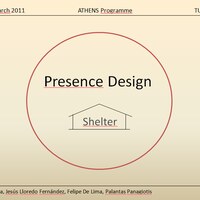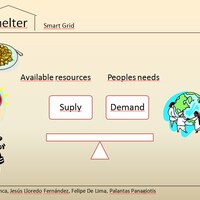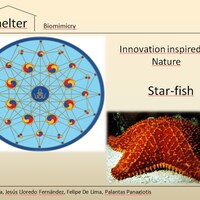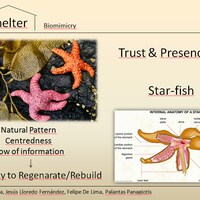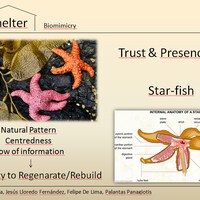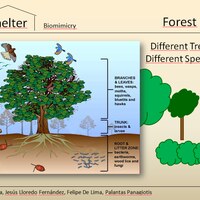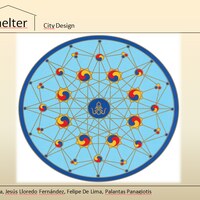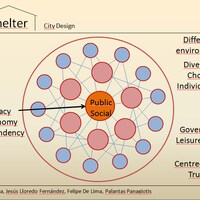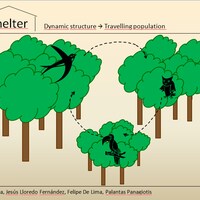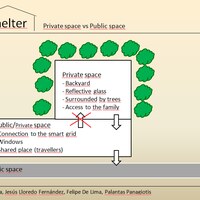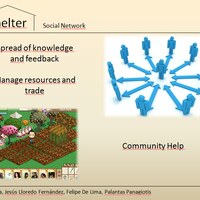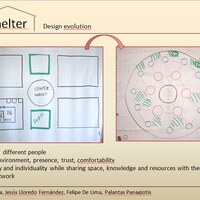Our subject is Shelter and we extended it to the design of a model city.
In our city design, we want Smart Grid to be very present and connected to the shelter concept, creating a more sustainable shelter, with less resources requirements and infrastructures, by making a balance between supply and demand.
In our design, all the neighborhoods represented by circles are connected through a grid and each line represents the flow of information, people and transport. It’s important that you understand that this is a dynamic design, it is not static. This connection between neighborhoods is very important for the social mimicry, that is, if one community has solved a problem, then, thanks for this flow of information, the solution will be more easily adopted by the other neighborhoods that share the same problem.
Each neighborhood has its representative to discuss problems of the whole city in the central part, where it is the governance, an organization center but also a leisure center or a social laboratory to promote interaction between people from all the neighborhoods. This concept of center creates trust and confidence.
Concerning the problem of privacy vs sharing resources, we design this city in a way that the neighborhoods closer to the center share more resources and have a more active participation in the society. On the other hand, neighborhoods in the periphery are for people that prefer to have their privacy and autonomy. Besides, each neighborhood has a different environment from the others to create diversity, choice and individuality.
The green spaces represent farms that are spread all over the city near the neighborhoods that prefer to live close to the farms.
Biomimicry contributed a lot for this city/shelter design. This structure and distribution of neighborhoods was inspired by the star-fish. Besides, a city with this pattern would be easily rebuilt if there was, for example, a tsunami that destroyed part of the city, because it has this repeated pattern and as a smart structure it enables a better flowing of information, so it would be easier to rebuild part of the city as the star-fish is able to regenerate a new arm. So this kind of structure creates the sense of survival, presence and trust for the residents.
Besides the inspiration in the star-fish for the city structure, we also were inspired by a forest that is group of many trees that shelter a lot of different species. One tree can be the habitat, the shelter of many different species. So, doing a metaphor between a forest and our city, the more central circles would be a like big tree shared by more species representing the neighborhoods where people prefer to share things and the circles in the periphery would be bushes representing the smaller neighborhoods that prefer their privacy.
This is a dynamic structure where not only the transport system, but also information and people are constantly flowing. So imagine a bird that is living in a forest, in a tree and then migrates to another forest. The bird represents the traveler, a person that comes from outside the neighborhood, people that like to have a flexible house. So we thought of creating houses with a private space separated from the public space, creating a more private and individual space in each house. This could be made surrounding part of the house with more trees, using curtains, less windows or using reflective glass so that the inside space in the house could not be seen from the outside.
This smart city has to make use of a social network to manage the resources sharing and trade. For instance, if someone goes traveling he could ask someone to take care of his garden while his out, in exchange of something else like energy. This idea is similar with what happens in Farmville, a game in social network facebook. Through the social network people can find other with complementary needs and trade favors or resources. Besides, the social network could also be used to form groups of experts in different fields of application and spread knowledge.
In conclusion, we have design a city that can shelter different/diverse people in a way that they feel safe, present, trust, comfortable, having a space for their privacy and individuality while sharing space, knowledge and resources with the aid of a social network.
Shelter – Final Design – Presentation
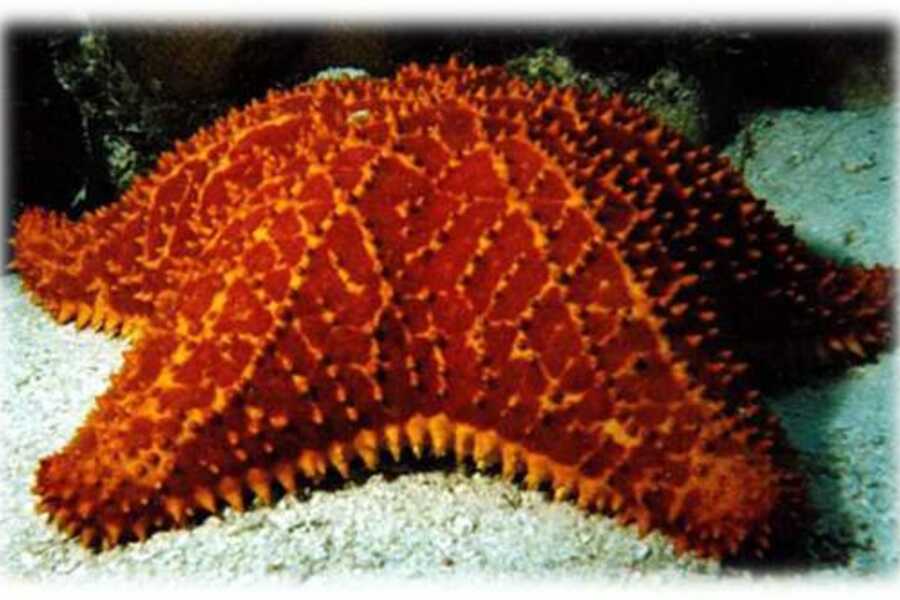
Our subject is Shelter and we extended it to the design of a model city.
Rita Franca , Jesús Lloredo Fernández , Felipe De Lima , Palantas Panagiotis


